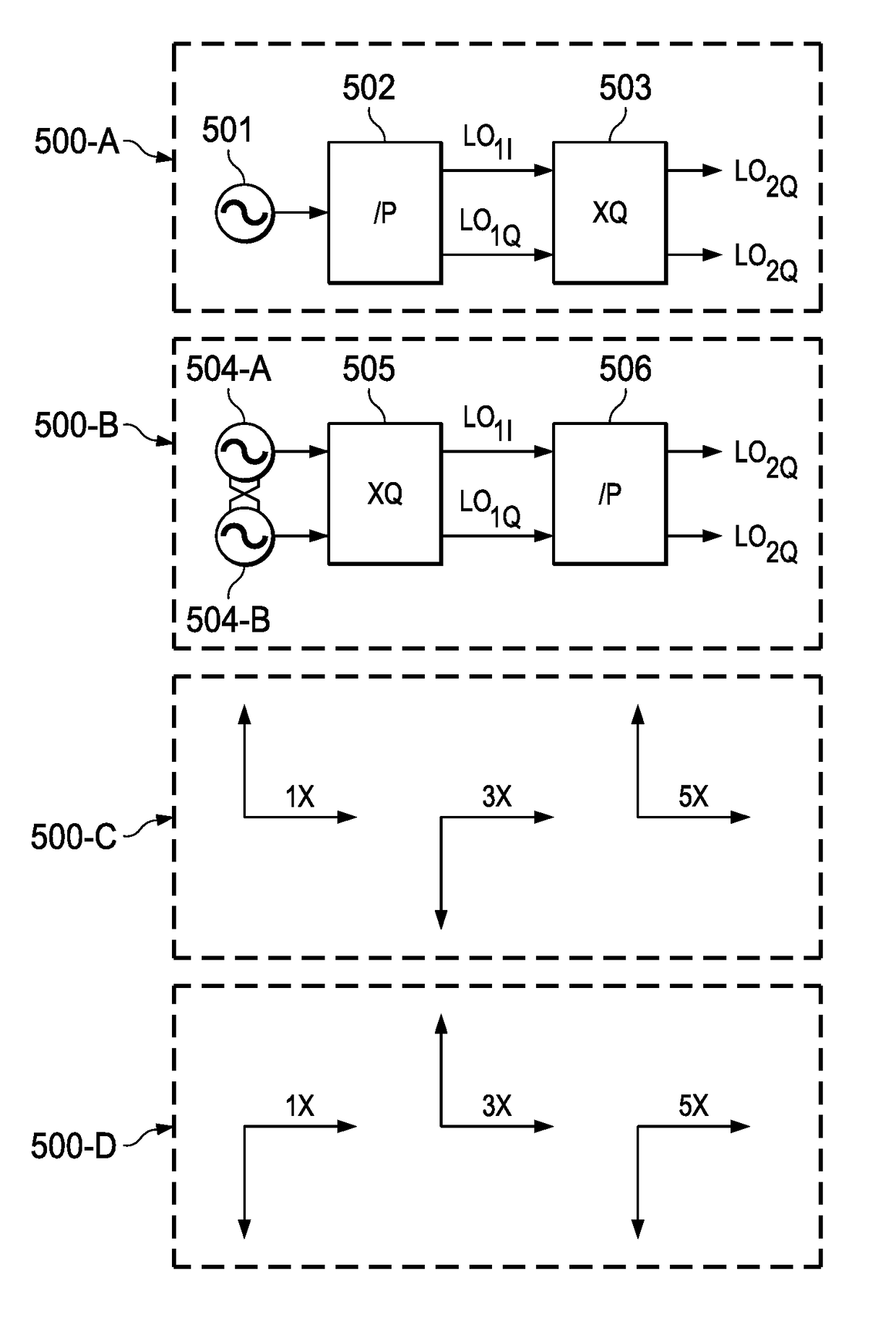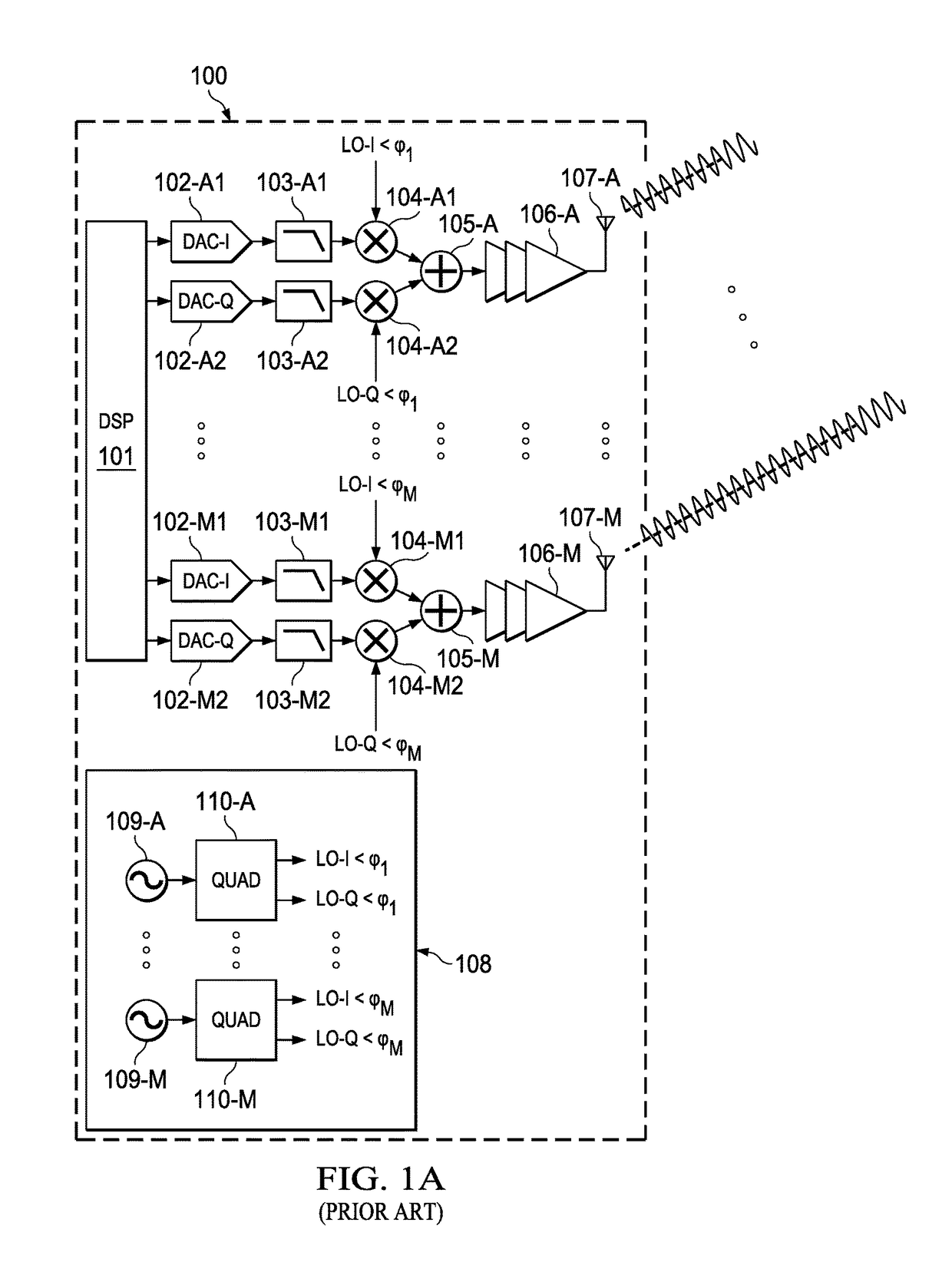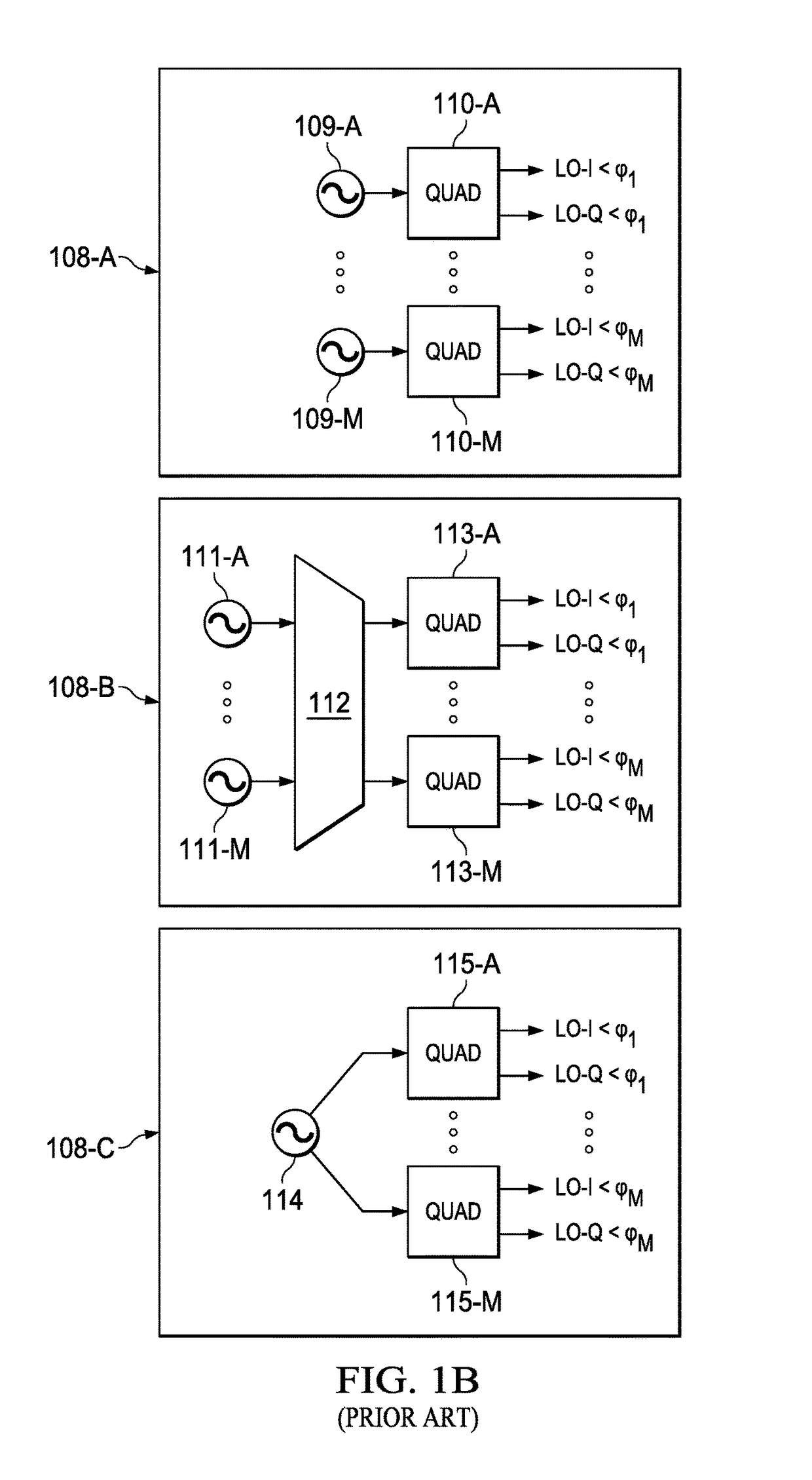Transmit/receive beamforming signal generation
a beamforming signal and beam technology, applied in the field of transmit/receive beamforming signal generation, can solve the problems of substantial system cost relative cost of rf circuit, and achieve the effects of enhancing the effective power of transmitted waveform, reducing signal loading, and reducing distortion
- Summary
- Abstract
- Description
- Claims
- Application Information
AI Technical Summary
Benefits of technology
Problems solved by technology
Method used
Image
Examples
first embodiment
[0081](A) A first embodiment includes single sideband up-conversion mixers using LO1 signals (e.g., only), where the quantities P and Q are mutually exchanged (e.g., swapped):
RF=LOQ=>LO=1 / QRF (Eq. 10)
[0082]Accordingly, when Q=3 and the RF center frequency is 35 GHz, the VCO frequency becomes 12.67 GHz, which is a sub-harmonic of the RF carrier frequency, such that the architecture is (e.g., mathematically) immune to frequency deviations from high PA output power via various coupling mechanisms.
second embodiment
[0083](B) A second embodiment includes single-sideband up-conversion mixers using LO2 signals (e.g., only), where the quantities P and Q are mutually exchanged (e.g., swapped):
RF=LOP / Q=>LO=Q / PRF (Eq. 11)
[0084]Accordingly, when P=6, Q=3 and the RF center frequency is 35 GHz, the VCO frequency becomes 17.5 GHz, which is a sub-harmonic of the RF carrier frequency, such that the architecture is (e.g., mathematically) immune to frequency deviations from high PA output power via various coupling mechanisms.
third embodiment
[0085](C) A third embodiment includes single-sideband up-conversion mixers using a combination of LO1 and LO2 in additive manner:
[0086]RF=LO1+LO2=LOQ(P+1)P=>LO=PQ(P+1)RF(Eq.12)
[0087]Accordingly, when P=2, Q=3 and the RF center frequency is 35 GHz, the VCO frequency becomes 7.8 GHz, which is a sub-harmonic of the RF carrier frequency, such that the architecture is (e.g., mathematically) immune to frequency deviations from high PA output power via various coupling mechanisms. Note that Q=1 leads to a simple case of sliding IF architecture (where the ratio of the LO1 / LO2 determines a division ratio in quadrature over the frequencies used in single sideband communications)
PUM
 Login to View More
Login to View More Abstract
Description
Claims
Application Information
 Login to View More
Login to View More - R&D
- Intellectual Property
- Life Sciences
- Materials
- Tech Scout
- Unparalleled Data Quality
- Higher Quality Content
- 60% Fewer Hallucinations
Browse by: Latest US Patents, China's latest patents, Technical Efficacy Thesaurus, Application Domain, Technology Topic, Popular Technical Reports.
© 2025 PatSnap. All rights reserved.Legal|Privacy policy|Modern Slavery Act Transparency Statement|Sitemap|About US| Contact US: help@patsnap.com



